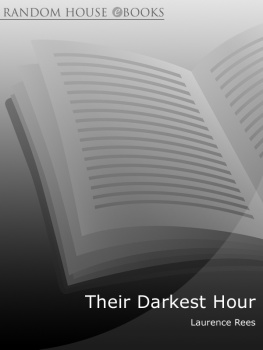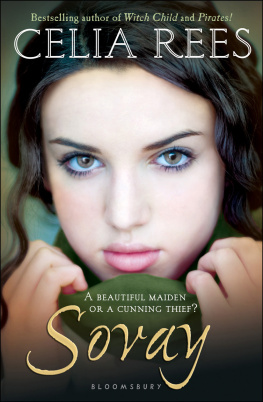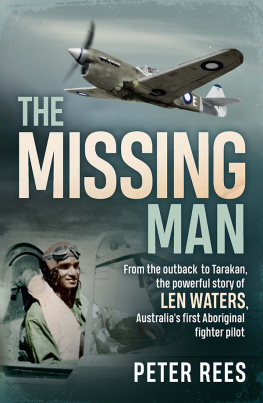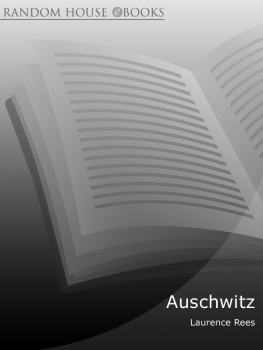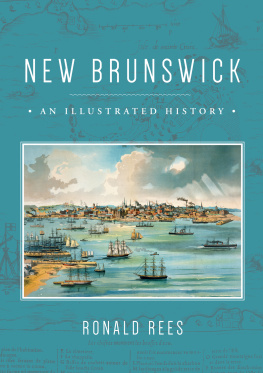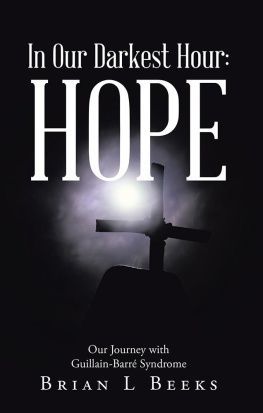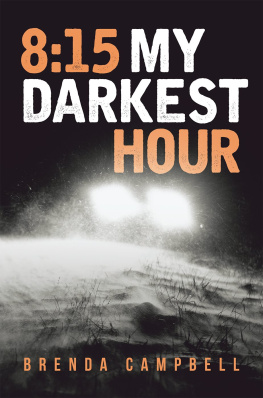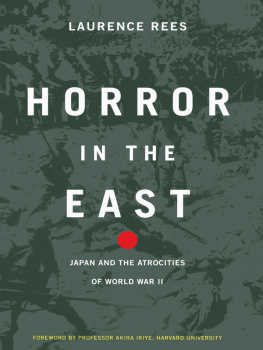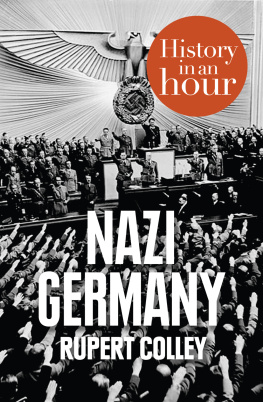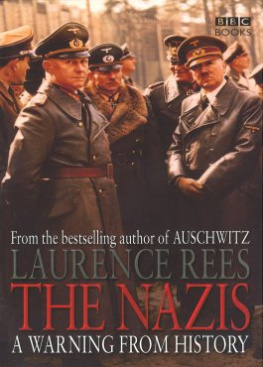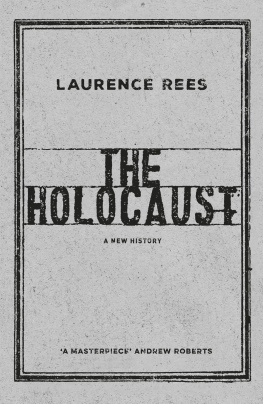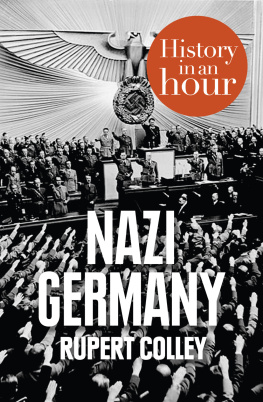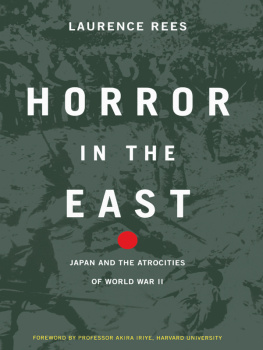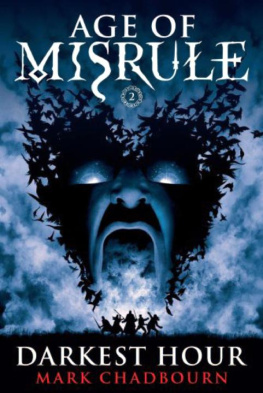CONTENTS
For Helena
INTRODUCTION
HOW COULD NAZI killers shoot Jewish women and children at close range? Why did Japanese soldiers rape and murder on such a horrendous scale? How was it possible to endure the torment of a Nazi death camp? For nearly 20 years I have tried to answer these and many other similar questions by meeting hundreds of people who participated in World War II. I was particularly interested in the motivation of the perpetrators the people who committed atrocities though I also met many of their victims and others who faced difficult, sometimes impossible, decisions during the war.
In the course of my work I travelled from Japan to the Baltic States, from Poland to America, from Germany to Borneo and from Italy to China. I encountered rapists, murderers and cannibals. I talked to soldiers who acted heroically; survivors of the worst atrocities imaginable; even a man who shot little children. Each of the hundreds of interviews was filmed, and each encounter lasted several hours. I used some of this interview material in a series of television documentaries I wrote and produced about the war and in the accompanying books, but an enormous amount of historical information remained unpublished. So I decided to study carefully once again the more than 7 million words of interview transcript and write a series of essays about the 35 most extraordinary people I met on my travels. This approach has enabled me to include in the previously published stories information that has not been made public before, and to add several new interviews, which appear here in book form entirely for the first time notably my encounters with Hiroo Onoda, Nigel Nicolson, Marie Platonow, Fritz Hippler and Kristina S derbaum. This fresh format also allowed me to offer an insight into my own personal encounters with all of these interviewees, which the previous narrative form prevented.
Over the years, as I questioned people who had been tested in ways that I had never been, I also felt questions asked of myself. And the one question that I believed I had to address more than any other was simple: what would I have done in similar circumstances? Of course, I could not know for certain. Had I been in those circumstances all those years ago then I would not have been the identical person I am today, since we are all shaped so much by the times in which we live. But in order to read any history we have to imagine what the past was like and create once again the circumstances in which historical characters lived. And by a similar act of imagination we can surely place ourselves in history and ask what kind of person we would have become in that situation, and consequently what choices we might have exercised.
The past is not some alien world. They may have done things differently there but that is because the circumstances were different, not because human beings and their fundamental needs and motivations were different. The physiology of the human mind has not changed over the last few thousand years (certainly not since World War II) and so the dilemmas and challenges faced in this book were faced by people essentially like us indeed, by our parents and grandparents. I believe there is consequently a great deal we can learn about ourselves by asking, What would we have done?
It was vital, of course, to treat the oral testimony that I and my team were gathering with an element of scepticism especially when people were talking so long after the event. We researched all the interviewees thoroughly before filming, and checked that the factual details of their story were consistent both internally with their own testimony and externally with documents of the period, like the war diaries of the various military units concerned. If we had any doubts about the fundamental veracity of a potential contributors testimony, then we did not film an interview.
Unlike some interviews conducted for oral-history projects, I also focused each filmed interview around a handful of specific themes. There were two reasons for this. First, I found we got the most interesting answers when we concentrated on one area rather than trying to cover an entire biography, and, second, it allowed us to check once again with internal references that the story we were hearing was consistent.
Then there is the question of how much we can expect human beings to recall so long after the events in question. Here I think there is an important distinction to make. If you interview people about what seem to them insignificant details, like the exact names of all their comrades years ago, it is likely that their recollections will be unreliable. But if you focus on key emotional moments, then in my experience many people have very powerful and accurate recall. I think we can recognize this from our own experience. I could not tell you, for example, exactly what I had for lunch four weeks ago. But I could tell you precisely the circumstances and emotions around the sudden illness and death of my mother 30 years ago. One event was not very significant to me; the other was a searing, life-changing moment that I can recall in almost photographic detail.
Historians must ask questions of all source material, and oral testimony is no exception to this rule. But, as I discuss later in this book in the story of Nigel Nicolson and the deportation of thousands of Yugoslav soldiers to their deaths, it is important to remember that documents are capable of lying just as much as people.
As for the format of this book, I have chosen to divide it into seven sections. But I appreciate that many of these interviewees could have fitted into several sections: someone involved in mass killing was also subsequently a prisoner, for example. So what I have done is to place each person in the category that was historically the most significant for them. This was, I think, the best way to present this material since it allowed comparisons between nationalities to be made which I believe have not been highlighted before; though I am the first to recognize that the chief value of this testimony remains the detail of the individual experience.
However, it is important that the intermingling in some sections of this book, of essays about former Nazis or soldiers of the Japanese Imperial Army with essays about veterans from the Allied side, is not taken to imply any moral equivalence between the different political systems involved. No one with my family heritage a father who fought in the RAF during the war and an uncle killed on the Atlantic convoys could ever forget that the Western democracies were fundamentally on the side of righteousness during the conflict. Though the testimony in this book does reveal that there are occasionally some surprising similarities of personal experience across national boundaries.
Meeting these people has changed the way I think about the world. Whilst they may have talked about the past, I believe that what they said is of value for the future.
Laurence Rees
London
JULY 2007
PART ONE MASS KILLING
OVER 60 MILLION people died in World War II more than in any other conflict in history and one of the chief reasons this level of carnage was possible was the power of modern methods of killing. Two of the three personal histories in this section illustrate how easy it had become both technologically and psychologically to kill people in large numbers by the middle of the twentieth century. Oskar Groening talks of the modern killing techniques of Auschwitz allowing him to separate himself from the murders during his time working in the camp. And Paul Montgomery speaks of the distancing effect of bombarding civilians from the air.

